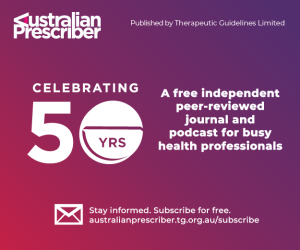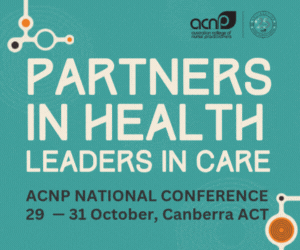In 2021, The Australian Digital Health Agency, in collaboration with the Australian Nursing and Midwifery Federation (ANMF), established an Aged Care Project to drive the adoption and use of My Health Record across residential aged care facilities.
The project is aiming to increase awareness about My Health Record and boost knowledge about how the online summary of an individual’s key health information can be utilised in day-to-day practice to improve care for aged care residents.
The ANMF was a key contributor to the Royal Commission into Aged Care Quality and Safety, providing numerous submissions and giving evidence on behalf of nurses and care workers at public hearings.
When the Royal Commission’s Final Report was handed down in March earlier this year, it recommended the universal adoption by the aged care sector of digital technology and My Health Record.
To support the goal, the project has developed a number of educational tools to help ANMF members to better understand the potential benefits of using My Health Record in aged care.
They include a series of interviews featuring nurses sharing practical examples on how My Health Record can streamline processes, change practice and, most importantly, improve care delivery and outcomes for residents.
Hosted by ANMF Federal Professional Officer Julie Reeves, the opening interview features Nicola Graham, Education and Adoption, Partnerships and Clinical Use, from the Australian Digital Health Agency, and Anthony Wilson, Nurse Manager Informatics and Productivity at Darling Downs Health in Queensland, who speaks about the benefits that have emerged from using My Health Record in acute and residential care facilities.
“It’s really to help facilitate the best possible care for each patient by allowing healthcare providers treating them to have access to that key health information in a timely manner,” says Ms Graham in the webinar, of the push to promote the use of My Health Record across the sector.
Importantly, My Health Record, an online summary of key health information, is personally controlled, part of a national system, accessible at all times, and safe and protected, she points out.
“My Health Record really provides healthcare providers with another source of information that they would not have had previous access to,” Ms Graham says.
Sharing his insight, Mr Wilson says one of the main benefits of using My Health Record in everyday practice is having a resident’s complete medical history at your fingertips, which enables providers and healthcare workers to develop a complete picture of a resident’s clinical health needs and outlook.
In his digital role, Mr Wilson supports nurses in utilising digital solutions to provide the best care for residents.
“I think probably the biggest benefit that we’ve seen from My Health Record is that ability for any authorised healthcare worker to be able to log on to that site and to be able to find information about someone under their care in one of their residential facilities,” he explains.
That capability is extremely important, especially when new residents enter aged care, he says.
“My Health Record gives the user the ability to be able to develop a picture about a client or consumer so that they can then make clinical decisions about the resident’s care.
“It enables our nurses and our doctors to be able to go in there and look at that information and then develop that picture, and we’ve been finding it imperative to use in recent times.”
Mr Wilson believes My Health Record’s ability to provide a more comprehensive information has changed everyday practice for the better.
As for usability, he describes the online system as intuitive and says nurses need to be provided with training and support, including understanding privacy requirements.
“What I recommend to staff when they first utilise it is to just become familiar. Go in there and have a look and see that you can find all the information.”
As My Health Record is more widely adopted in aged care, and data and information grows, Mr Wilson believes the system has the potential to become a powerful tool in the aim to provide better care.
For now, he suggests the biggest barrier in relation to the digitalisation of healthcare across residential aged care facilities remains the reliance on paper-based systems by many providers.
“The biggest barrier is moving from a paper-based system to a fully digitalised system and not having this mixed hybrid model where we have paper and digital records,” he says.
“We really need to move towards having a full digital solution towards all of our aged care facilities so we have the latest information up to date and we can then provide that care to our residents.”
Watch the full interview here –
In the second interview, Ms Reeves talks to Melinda Brooks, a Victorian Nurse Practitioner specialising in wound management in aged care and the community, about how My Health Record could be useful when treating her patients.
On a typical day, Melinda visits several aged care facilities across the state to help residents manage their wounds and skincare.
She says having a resident’s medical information collated in one place and easily accessible digitally through My Health Record could potentially help improve her practice and care. Currently, it’s common for her to be chasing up an individual’s health summary from GPs.
“I often find that a client’s health history may not be complete,” she reveals.
“When I go in, if I haven’t met the person before I’ll look at their medical history, their medications, their activities of daily living, to get an assessment of the information I need before I go in and see the resident who has a wound.
“So if the person has been newly admitted and a lot of that information hasn’t been put into the system in the facility, then if I was able to access that in a quicker manner on the My Health Record, it would certainly save me a lot of time.”
In her limited experience with My Health Record, Melinda says she has found the online system straightforward to use and navigate. Training for nurses should incorporate navigating around the site and how to access a patient’s key health information.
The Australian Digital Health Agency provides a range of educational material on how to use My Health Record online, including fact sheets, brochures, e-learning modules, classroom sessions on software guides and links to recorded webinars on how to find specific information.
Watch the full interview here –
A third interview features aged care registered nurse and ANMF (SA Branch) Professional liaison officer Cheryl Reid discussing her experiences in the sector and some of the challenges nurses experience when they can’t easily access health information for their residents.
Cheryl has worked in aged care for most of her professional career, including roles as an RN, clinical nurse consultant and Director of Nursing.
She believes My Health Record could have a positive impact across the sector.
“One of the biggest benefits would be to be able to have some continuity of resident care,” she says.
“Often people come to aged care from the hospital system, or even from home, and at times they don’t bring their own GP with them, they are allocated a new one because they’re in a different geographical location and that GP often doesn’t have their complete medical history. To be able to access that information would give us a greater continuity of care residents.
“Often we admit residents, or they go to hospital and come back to us, and not all the information is provided. , We can get wrong information, missing pieces of information, and even medication charts are not up to date.. Being able to access that information and know that it was correct and up to date would certainly benefit residents in aged care.”
For My Health Record to be adopted universally in aged care, Cheryl says nurses should be given adequate time to understand and use the system. Most nurses have baseline IT skills, she says, but there are still some facilities who only use paper-based records.
Above all, Cheryl says the biggest barrier to connecting all aged care facilities to My Health Record is the lack of nurses.
“I think there is a severe shortage of clinically trained staff in aged care facilities,” she says.
“In aged care, even 15 years ago for an 80-bed facility, there would have been two registered nurses and two enrolled nurses, as well as carers to provide care to those residents.
“Today, you’re lucky if there’s an RN and an EN on site to provide that clinical care. So certainly having nurses with the knowledge to access that information would be beneficial. I think it’s really important to have the system working and accessible across aged care with enough nurses to be provide the care residents need.”
For more information
Visit My Health Record – www.myhealthrecord.gov.au
Australian Digital Health Agency – www.digitalhealth.gov.au
My Health Record in aged care – https://www.myhealthrecord.gov.au/for-healthcare-professionals/aged-care








